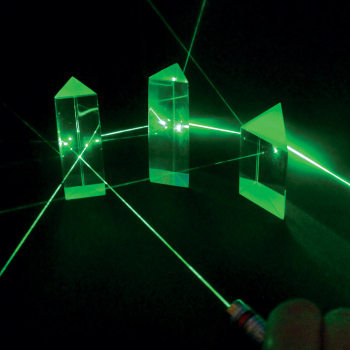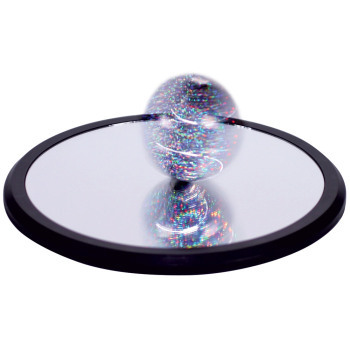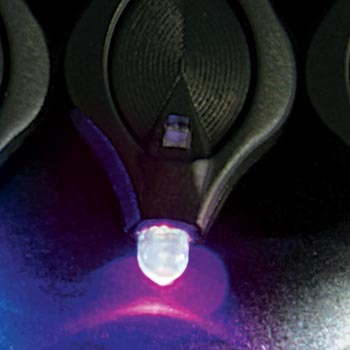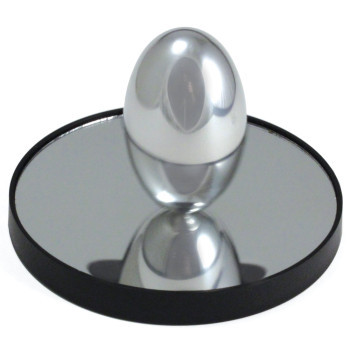Description
The PhoTOP consists of a flat disk 12 cm in diameter and a two-part aluminum spindle. The resulting spinning top has phosphorescent paint on one surface and instructions for its use on the opposite surface. It is intended to be combined with a near UV/deep purple 405nm laser pointer (included) - though part of the fun is experimenting with other light sources, even a smartphone light. When the top is spun, the UV or other light source is pointed at the spinning top's phosphorescent surface, resulting in green luminescent spiral patterns, as well as Lissajous and other figures. It is a mesmerizing piece of kinetic art, a toy or plaything for the amusement of children and the young at heart, and an educational apparatus to illustrate principles of quantum mechanics and phosphorescence, as well as principles of pattern formation. Requires 2 AAA batteries (not included). The PhoTOP has undergone extensive testing to meet all US safety standards. (It is intended for use by adults or children older than three years of age because of the possibility of swallowing the spindle by younger children.) The PhoTOP and its inventor, Kenneth Brecher, Professor of Astronomy and Physics, Emeritus at Boston university, have been featured in several online publications, including Gizmodo.Reviews




 Dec 12, 2023
Dec 12, 2023
Was this review helpful?




 Feb 7, 2023
Feb 7, 2023
Was this review helpful?
NGSS
This product will support your students' understanding of the Next Generation Science Standards (NGSS)*, as shown in the table below.| Elementary | Middle School | High School | ||
| 1-PS4-2
Students can use this tool to make observations to construct an evidence-based account that objects in darkness can be seen when illuminated. |
MS-PS4-1
Students can use this tool to formulate mathematical representations to describe a simple model for waves that includes how the amplitude of a wave is related to the energy in a wave. |
HS-PS4-3
Students can evaluate evidence and reasoning behind the idea that electromagnetic radiation can be described by a wave model or a particle model. HS-PS4-5Students can use this tool to communicate technical information about how some technological devices use the principles of wave behavior and wave interactions with matter to transmit and capture information and energy. |
Students can use the PhoTop as an educational tool to help them make observations and collect evidence illustrating simple principles to help explain how objects illuminate while focusing on wave patterns.
* NGSS is a registered trademark of Achieve. Neither Achieve nor the lead states and partners that developed the Next Generation Science Standards were involved in the production of, and do not endorse, this product.
You May Also Like
-
$39.95
-
$19.95











